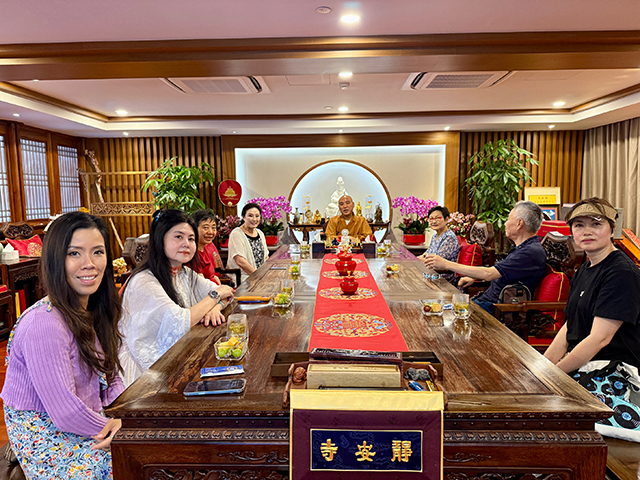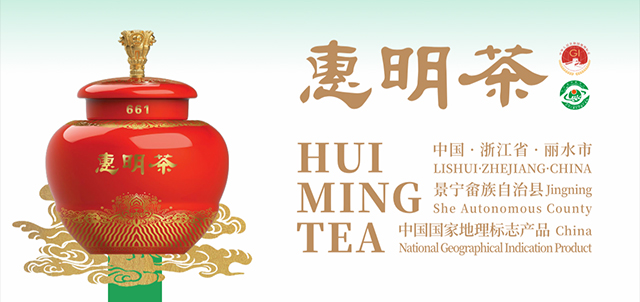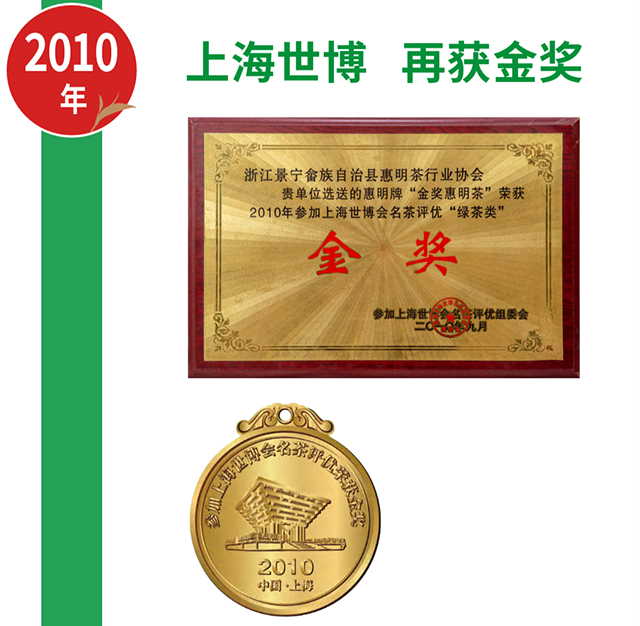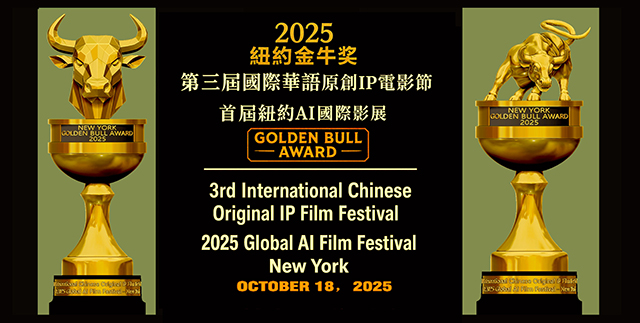
2025年7月13日,观音菩萨吉祥日
仲夏吉日,阳光澄明,祥云氤氲。适逢观音菩萨圣诞,我与六位中美文化界至交好友费佳、Lingying Cao、诗画家严力伉俪、作家施天权教授和媒体人沈慧石,共赴一场心灵与文化之约,走进千年古刹上海静安寺。
静安寺初建于三国吴赤乌年间,距今已有一千七百余年。寺庙几度迁移重修,虽历经战火与风雨,香火却绵延不绝,被誉为“先有静安寺,后有上海城”。这座弥漫着宋古遗风、璀璨辉煌的寺庙建筑群,总面积达2.2万平方米,中轴线上从南至北依次坐落着山门、钟楼鼓楼、大雄宝殿和法堂等建筑,形成前寺后塔的格局。仿唐风格的山门与天王殿一体,门楣上方的“静安寺”匾额,由与齐白石齐名的上海著名书法家邓散木先生于1945年题写。如今隐于都市繁华之中,却仍独守一方清净,钟声梵音,如沧海遗珠,令人敬仰。



此次参访,尤得殊胜因缘,蒙方丈慧明大和尚亲切接待。在古朴庄重的贵宾接待室中,我们品茶,聆听方丈开示,宛如置身于千年禅林与茶烟之境,心灵顿感澄明。
慧明方丈详述了静安寺的历史流转,亦特别引入“惠明茶”的渊源与精神内涵。原来,这一名茶不仅香扬四海,其命名背后更承载着禅意深远与人文情怀。
据传,“惠明茶”源自初唐高僧惠明禅师。禅师与禅宗六祖慧能在大庾岭一别后,隐居于浙江景宁山谷之中,结庐修行,种植茶树。他将茶视为禅修伴侣,以茶汤为药,疗疾济世,教化乡民,广施慈悲,深受爱戴。村民因感念其恩德,将他所植之茶称为“惠明”,寓意“惠泽众生,明心见性”。
禅师一生清简无为,行止有道,最终于江西上高县圆寂,享年一百零八岁,世人尊称其“茶寿圆寂”。后人为纪念其功德,于其旧址建寺,名曰“惠明寺”,香火延续至今,茶禅流芳百世。
清代乾隆年间,惠明茶被列为宫廷贡品,每年进贡不过两斤,极为珍贵。民国时期,该茶代表中国远赴美国旧金山,参加“巴拿马太平洋万国博览会”,荣获金质奖章与一等证书,跻身世界名茶之列。如今,惠明茶不仅被列为浙江名茶,更在全国名茶评比中屡次斩获金奖,成为中外文化交流的重要象征。
更令人惊喜的是,定慈法师特地为我们展示了“钵形狮吼茶罐”--其形取佛钵,象征禅修圆满之境;罐身四面狮吼,意喻佛音震寰宇,正法弘扬;雕饰“海水江崖纹”,寓意祥瑞、稳固、福泽深厚;罐底所刻的纪念年份,更是将“茶禅一味”的精神镌刻入历史之中。这款“惠明茶礼”,已被列为国际文化交流国礼,曾赠予多国元首政要,意义深远。
茶香氤氲间,我也向慧明方丈介绍了即将于十月中旬在纽约隆重举办的“第三届国际华语原创IP电影节暨首届纽约AI国际影展”。并展示了我设计的“2025纽约金牛奖”奖杯图片。慧明方丈当即表示将通过世界和平友好交流协会全力支持,并欣然允诺捐赠一千盒惠明茶作为本届影展的官方礼品。以茶为媒,传播东方文化智慧与和平理念,此情此义,感人至深。
午后,我们移步素斋堂,首次品尝寺内精致禅意素斋。多种花色小菜聚一盘,皆以时令自然入味,清淡中见清明,简素中显圆满。席间欢谈不断,法喜充满。临别之时,定慈法师依方丈嘱托,为每位贵宾赠送“惠明茶"一盒。我们双手合十,深感温暖,此情此意此景难以忘怀。
此次拜访静安寺,不仅是一个跨越历史时空的文化之行,更是一场身心俱净的智慧之旅。定慈法师特别陪同我们参观了寺内雄伟的大雄宝殿及院内建筑。在佛门净地聆听千年法音,在一盏清茶中感悟大悲愿力,我们从红尘喧嚣中暂得安顿,心生欢喜,感恩无量。
愿“惠明茶”的馨香,伴随纽约电影节走向世界,润泽人心,连接彼此,传递和平与光明。愿一切因缘,皆成善果;愿禅茶一味,光照四方。
May All Causes and Conditions Bear Fruit in Goodness
—Reflections on a Visit to Jing’an Temple in Shanghai
Qiongzhao Ellen. Schicktanz
July 13,2025 - Auspicious Day of Guanyin Bodhisattva
On this midsummer day of radiant sunlight and auspicious clouds, coinciding with the sacred birthday of Guanyin Bodhisattva, I had the privilege of visiting the ancient Jing'an Temple in Shanghai with six esteemed friends from the Chinese and American cultural communities: Fei Jia, Lingying Cao, the poet-painter couple Yan Li and his wife, Professor Shi Tianquan, and media professional Ms. Shen Huishi. It was a cultural and spiritual gathering of deep resonance.
Jing’an Temple was originally established during the Chiwu reign of the Kingdom of Wu in the Three Kingdoms period, with a history spanning over 1,700 years. Though the temple has been relocated and rebuilt multiple times, and has endured war and the ravages of time, its incense offerings have never ceased. It is said, “Jing’an Temple existed before the city of Shanghai.” This temple complex, which is filled with the legacy of the ancient Song Dynasty and is splendid and brilliant, covers a total area of 22,000 square meters. From south to north, the mountain gate, bell tower, drum tower, main hall and Dharma Hall are located on the central axis, forming a pattern of temple in front and tower in the back. The mountain gate in imitation of the Tang Dynasty style is integrated with the Heavenly King Hall. The "Jing'an Temple" plaque above the lintel was written by Mr. Deng Sanmu, a famous Shanghai calligrapher who is as famous as Qi Baishi, in 1945. Nestled amid the modern cityscape, it remains a rare sanctuary of peace, its bell chimes and Buddhist chants echoing like pearls hidden in the vast ocean—commanding awe and reverence.
This visit was made all the more special by the warm reception of the abbot, Master Huiming. In the temple’s dignified and elegantly austere VIP reception room, we sipped tea and listened to the abbot’s teachings, feeling transported to a timeless Zen forest cloaked in tea mist. Our hearts felt instantly at peace and clarity.
Master Huiming recounted the temple’s long and storied history and shared with us the origin and spiritual significance of “Huiming Tea.” Far more than a fragrant beverage, this tea embodies profound Zen philosophy and humanistic values.
According to legend, “Huiming Tea” traces its origins to the early Tang Dynasty, to the revered monk Master Huiming. After parting ways with the Sixth Patriarch Huineng at Dayuling, he retreated into the remote valleys of Jingning, Zhejiang, where he built a thatched hut, practiced meditation, and cultivated tea trees. He viewed tea as a companion in Zen cultivation, using tea infusions as medicine to heal the sick and educate the local villagers. His compassion and virtue won deep admiration. In gratitude, the villagers named the tea he planted “Huiming,” symbolizing “benefiting all beings and awakening true nature.”
The monk lived a life of simplicity and purpose, ultimately passing away in Shanggao County, Jiangxi, at the age of 108—a venerable age known as “Tea Longevity” in his honor. To commemorate his legacy, a temple—Huiming Temple—as built on the site of his hermitage, and both the tea and his teachings have been passed down through generations.
During the Qianlong era of the Qing Dynasty, Huiming Tea was designated as a tribute tea for the imperial court, with only two jin (approx. 1kg) offered annually, underscoring its rarity. In the Republican era, the tea represented China at the Panama-Pacific International Exposition in San Francisco, where it won a gold medal and a first-class certificate, earning recognition as one of the world’s finest teas. Today, Huiming Tea is listed as a Famous Tea of Zhejiang and continues to win gold medals in national competitions. It has become a meaningful symbol of Chinese culture in international exchanges.
A particularly delightful surprise came when Master Dingci presented us with the exquisite “Lion’s Roar Alms Bowl Tea Caddy.” Its design, shaped like a Buddhist alms bowl, symbolizes the completeness of Zen practice. The caddy’s four sides feature roaring lions, representing the Dharma voice reverberating through the universe. The decorative patterns of waves and cliffs symbolize auspiciousness, stability, and deep blessings. An inscribed commemorative year at the base further engraves the spirit of “Zen and Tea as One” into history. This elegant tea gift has been offered to various international heads of state as a cultural diplomatic gift, carrying profound significance.
Amid the rising fragrance of tea, I also introduced to Abbot Huiming the upcoming Third International Chinese-Language IP Film Festival and the Inaugural New York AI International Film Festival, to be held in New York this October. I shared images of the “2025 New York Golden Bull Award” trophy, which I designed. The abbot immediately expressed his full support through the World Association for Peaceful and Friendly Exchange and graciously pledged a donation of 1,000 boxes of Huiming Tea as the official gift of the festival. Through tea, we convey Eastern wisdom and the spirit of peace—this gesture touched us deeply.
In the afternoon, we moved to the vegetarian dining hall and enjoyed a refined Zenstyle vegetarian meal for the first time. A variety of seasonal vegetables delicately arranged on a single plate offered pure and balanced flavors. Within their simplicity lay completeness. Amid joyful conversations, we felt enveloped in Dharma bliss. Before parting, Master Dingci, on behalf of the abbot, gifted each guest a box of Huiming Tea. With palms joined in gratitude, we felt a profound warmth—this experience, this kindness, this moment, will remain unforgettable.
This visit to Jing’an Temple was more than a cultural pilgrimage across the ages—it was a spiritual journey of purification and insight. Master Dingci also guided us through the grand Mahavira Hall and temple grounds. Listening to ancient chants in this sacred Buddhist sanctuary and contemplating the power of compassion over a cup of tea, we found a moment of peace amidst the noise of the world—hearts uplifted, gratitude overflowing.
May the gentle fragrance of Huiming Tea accompany the New York Film Festival as it reaches out to the world—nourishing hearts, building connections, and spreading peace and light.
May all causes and conditions bear fruit in goodness;
May Zen and tea in harmony shine light upon all corners of the world.










相关链接:
纽约,我住在你的心脏
故宫百年华诞:时光与文明的殿堂
从著名艺术家艾伦赵琼的巨幅历史浮雕 解析其独特的美学特质和艺术语言
艾伦赵琼的秦俑系列:最震撼的视觉艺术盛宴
中国艺术家、外交官王盈笔下的法兰西人文景观和自然风光
艺术家艾伦赵琼呼吁让艺术色彩疗愈孩子们的心灵和成长
艾伦赵琼获联合国“世界文化艺术成就奖”并发表演讲
艾伦赵琼榮获格林伯格全球领袖奖
艾伦赵琼痛悼池田大作:中日邦交友谊长存
辉映香江:首届世界华人美术金笔奖颁奖典礼在香港隆重举行
“世界艺术引领者”:艾伦赵琼荣获纽约国际艺博会最高奖
艾伦赵琼巨幅作品将亮相2023年美国纽约国际艺术博览会
艾伦赵琼捐赠美国华人大会《华盛顿总统率军渡河》青铜浮雕
第三届美国华人联合会大会暨首届UCA全国青年大会在华盛顿隆重举行
美国女神艺术博物馆捐赠中国国宝昭陵六骏百年拓片
日中春晚奏响虎年之春 纪念日中邦交正常化50周年
无界东西——国际青年艺术家优秀作品展
艾伦:用青铜艺术雕铸美国精神
艾伦入选“美中建交40年40位领军侨领”
罗丹国际艺术家基金会副秘书长艾伦图片锦集
艾伦赵琼作品选登




